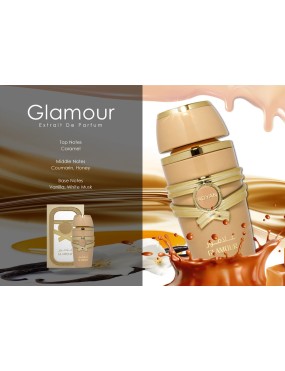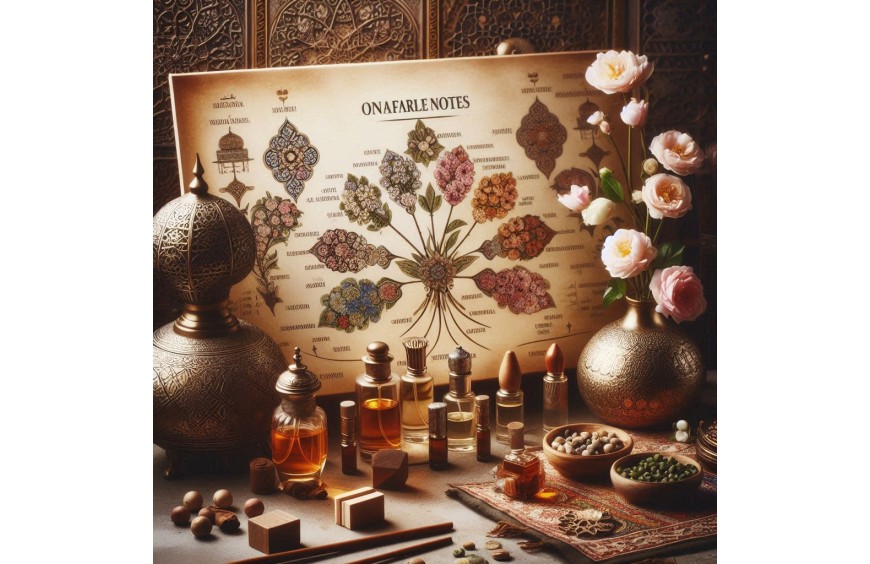New products
-
Pre-orderAdyan Glamour ExDP 100ml€35.00 PricePre-orderAdyan Mahib EDP 100ml€23.90 PricePre-orderAdyan Majestic ExDP 100ml€35.00 Price
-
Pre-orderAdyan Musc Mango ExDP 100ml€35.00 PricePre-orderAdyan My Cherry ExDP 100ml€35.00 PricePre-orderAdyan Timeless ExDP 100ml€35.00 Price
-
Pre-orderAdyan Riviera ExDP 100ml€35.00 PricePre-orderAdyan Coconut Vanille ExDP...€35.00 Price
How to recognize the notes of a perfume
The work of perfumers can easily be compared to that of an artist, a painter, a composer, a musician, a poet, and anyone who places creation at the basis of their art. The creation of a perfume is a pure artistic act that comes to life thanks to the olfactory memory of the nose, which manages to imprint more than 3000 scents in its "mind".
Each perfume is, therefore, the result of the union between different essences, of the choice of the smells that best blend and enhance each other. It is the outcome of the daily exercise that perfumers do to recognize and memorize the palette of perfumes. Certainly at the base there is scientific, chemical and technical knowledge, but without a strong artistic sensitivity and an extraordinary olfactory memory it would not be possible to transpose one's experiences into artistic form.
To have an idea of how big the world is behind the creation of a perfume, you need to know the seven olfactory families on which the perfumer works to give life to his olfactory stories.
The first family is the citrus (fruity) one, within which we recognize fragrances rich in more common citrus notes, and therefore lemon, mandarin, orange, bergamot and grapefruit, but exotic fragrances such as lime and yuzu are also included.
Another very well-known family is the floral one, which is distinguished between a floral bouquet and a single floral note. Rose, jasmine, violet, tuberose, narcissus are among the most used flowers because they are more appreciated.
The mix of lavender, geranium, vetiver, moss woods, oak, coumarin and tonka bean belongs to the fougère family, which takes its name from the Fougère Royal line created by perfumer Jean François Houbigant.
Other accords of rose, jasmine, patchouli, labdanum and oak are included in the chypre family, with very intense notes. One of the most loved is Emir Fascination by Paris Corner available on the site.
The woody family is very particular, due to the strong presence of dry woods such as cedar and vetiver and warm notes such as sandalwood and patchouli. To tone down the notes of this family a little, you can add marine or citrus accents, or you can make them more voluptuous with spicy and oriental notes.
Next comes the amber family, the cradle of enveloping and persistent perfumes. Oriental notes such as patchouli and spices, which are found in our Paris Corner Ophidian Black Cherry perfume, are often associated with powdery, musky and vanilla blends.
Finally, the leather family, based on a particular mix of accords that recreate the smell of tanned leather, and which is often lightened by citrus and floral notes.
But is there a way to recognize the notes of a perfume even without being an expert master perfumer? The answer is, obviously, yes, and in the following lines, readers who are passionate about perfumes will learn how to do so.
How to recognize perfumes
Wearing a perfume is a very precise and eloquent action, because for each chosen fragrance corresponds a specific message to communicate. A bit like when you give flowers as a gift and you have to think about the message you want to convey, to choose that variety that, with the language of flowers, speaks precisely of that emotion or that feeling.
Fragrances speak of sensuality, freshness, romance, feelings. Because, in addition to the olfactory note, there is a very evocative part of the perfume that manifests itself with the simple gesture of wearing it. Perfumes communicate a lot and, often, they reach people in a more immediate way than the personality itself is able to do.
Perfumes seduce, because they have a strong influence on the perception of those who smell them. And, obviously, they have it on the person who wears them.
This is where the famous notes of perfumes come into play, those that make up the olfactory pyramid of perfumes, which you can read more about to delve deeper into the topic right on our pages. These notes belong to an objective dimension of perfumes, but to recognize a perfume you also need to draw on the subjective one.
The sense of smell, in fact, belongs to a personal and subjective world, often difficult to communicate. Many people have smelled a scent and not been able to describe it, and that is exactly what happens, most of the time, when you smell a fragrance that strikes you.
Also because every perfume is born first in the head of the person who creates it, and then takes shape and meaning, until it reaches the skin of the person who wears it, and on which it could have a different result than originally thought.
Therefore, after having identified the raw materials with which a specific perfume was created, having understood the mixing and combination of multiple ingredients, you need to use the olfactory families to recognize the notes.
It is precisely the notes that have the task of composing the fragrances and differentiating them from each other, because the notes of the olfactory pyramid change based on the degree of volatility of the essential oil that composed the perfume. The latter is its evaporation speed in contact with the air, and from this speed we can observe the evolution of the perfume from the moment it is vaporized and its persistence over time.
When examining a perfume, therefore, we must think about the coexistence of the three types of notes (top, heart and base), which are recognized little by little, one after the other. The first note, the top note, is the freshest and most immediate, generally made with essences of citrus fruits, aromatic herbs, exotic fruits and aquatic notes, the one that quickly fades but gives the first olfactory impressions to those who smell it.
The top notes immediately leave room for the heart notes, already more powerful and consistent, full and sensual than the top notes, with a more intense and enveloping persistence, because they represent the development of the perfume and the characteristic "trail". They are the notes that act on the emotional level, those that awaken deep sensations and memories. They represent, in fact, the heart of the fragrance, its dominant character. These notes are usually fruity or floral, but they also evoke the green nature and the scents of the ocean.
Finally, after about ten minutes, it is the turn of the base notes, the last to be perceived, the heaviest, those that evaporate slowly and gradually, because they are the soul of the fragrance, its personality.
Characterized by woody, musky, oriental and amber notes, but also by aquatic and aromatic notes, the base notes are very important for the brands we have chosen to talk about because of their persistence, which makes them suitable for stabilizing other more volatile essences. But they are also able to have a soothing and relaxing effect that acts on the perception of those who smell and wear them.



















 Italiano
Italiano English
English

















Leave a Reply Cancel Reply